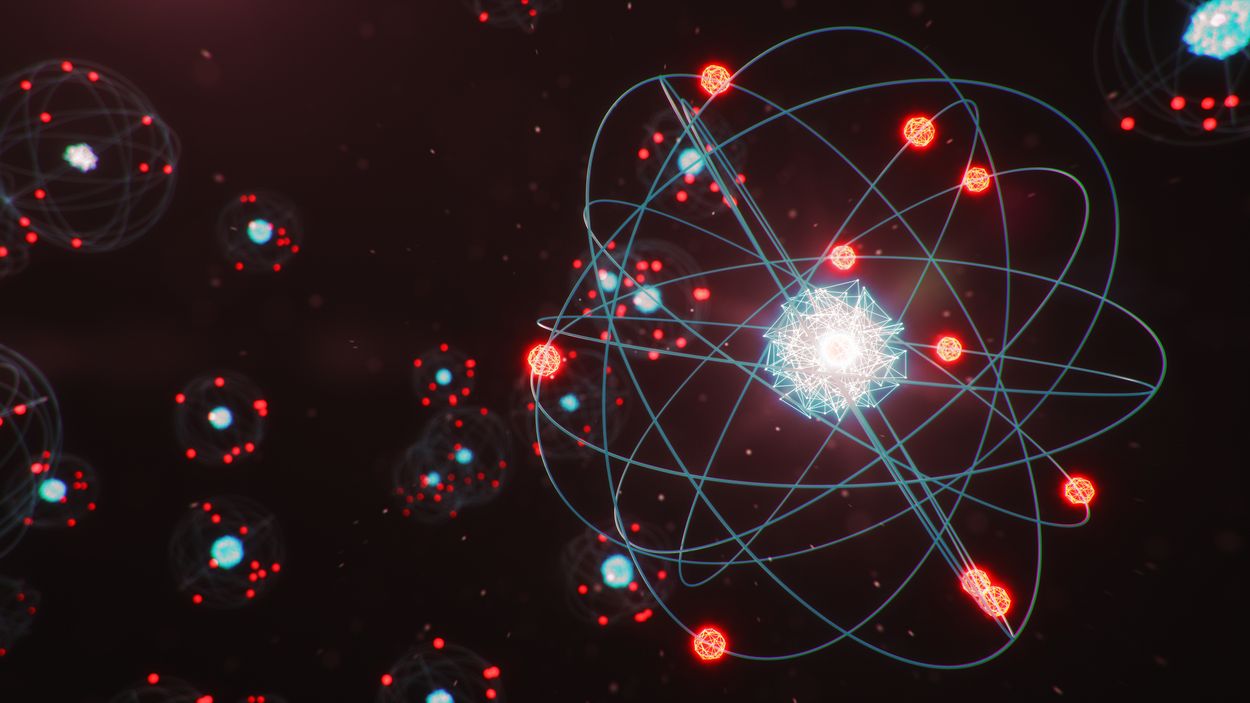
Atomic bombs are among the most powerful and devastating weapons ever created. But how much do you really know about them? From their inception during World War II to their lasting impact on global politics, these weapons have a complex and often controversial history. Did you know that the first atomic bomb test was code-named "Trinity"? Or that the bomb dropped on Hiroshima was called "Little Boy"? This blog post will take you through 28 fascinating facts about atomic bombs, shedding light on their scientific principles, historical significance, and the ethical debates surrounding their use. Buckle up for a journey through the explosive world of atomic bombs!
What is Atomic Energy?
Atomic energy, also known as nuclear energy, is the energy released during nuclear reactions. It powers everything from electricity grids to submarines. Let's dive into some fascinating facts about atomic energy.
-
Atomic energy comes from the nucleus of atoms. This energy is released through nuclear fission, fusion, or radioactive decay.
-
Nuclear fission splits atoms. When a heavy nucleus splits into smaller parts, it releases a significant amount of energy.
-
Nuclear fusion combines atoms. Fusion occurs when two light atomic nuclei combine to form a heavier nucleus, releasing energy.
-
The sun is a giant nuclear reactor. The sun's energy comes from nuclear fusion, where hydrogen atoms fuse to form helium.
-
Nuclear power plants use fission. Most nuclear power plants generate electricity through controlled nuclear fission reactions.
History of Atomic Energy
The journey of atomic energy began in the early 20th century. Here are some key milestones in its development.
-
Albert Einstein's famous equation. E=mc², formulated by Einstein in 1905, explains the relationship between mass and energy, laying the groundwork for nuclear energy.
-
Discovery of the neutron. In 1932, James Chadwick discovered the neutron, a crucial component in nuclear reactions.
-
First controlled nuclear chain reaction. In 1942, Enrico Fermi and his team achieved the first controlled nuclear chain reaction at the University of Chicago.
-
Manhattan Project. During World War II, the Manhattan Project developed the first nuclear weapons, leading to the bombings of Hiroshima and Nagasaki.
-
First nuclear power plant. In 1954, the Obninsk Nuclear Power Plant in the Soviet Union became the world's first nuclear power plant to generate electricity.
Uses of Atomic Energy
Atomic energy has a wide range of applications beyond electricity generation. Here are some notable uses.
-
Nuclear submarines. These submarines use nuclear reactors to operate underwater for extended periods without refueling.
-
Medical applications. Nuclear medicine uses radioactive isotopes for diagnosis and treatment, such as in PET scans and cancer therapy.
-
Food irradiation. This process uses gamma rays to kill bacteria and pests, extending the shelf life of food.
-
Space exploration. Radioisotope thermoelectric generators (RTGs) power spacecraft, like the Mars rovers, using the heat from radioactive decay.
-
Industrial applications. Nuclear techniques are used in industries for material testing, quality control, and process monitoring.
Safety and Environmental Impact
Safety and environmental concerns are critical when discussing atomic energy. Here are some important facts to consider.
-
Nuclear accidents. Major accidents like Chernobyl (1986) and Fukushima (2011) highlight the potential risks of nuclear energy.
-
Radioactive waste. Nuclear power plants produce radioactive waste that must be carefully managed and stored for thousands of years.
-
Low greenhouse gas emissions. Nuclear power plants emit very low amounts of greenhouse gases compared to fossil fuel plants.
-
Nuclear safety measures. Modern reactors have multiple safety systems to prevent accidents and contain radiation.
-
Decommissioning nuclear plants. Decommissioning involves safely dismantling a nuclear power plant after its operational life ends.
Future of Atomic Energy
The future of atomic energy looks promising with advancements in technology and new applications. Here are some exciting developments.
-
Small modular reactors (SMRs). These compact reactors offer flexibility, safety, and lower costs compared to traditional reactors.
-
Fusion energy research. Scientists are working on making nuclear fusion a viable energy source, which could provide nearly limitless clean energy.
-
Thorium reactors. Thorium is an alternative nuclear fuel that is more abundant and produces less long-lived radioactive waste.
-
Advanced nuclear reactors. Generation IV reactors promise improved safety, efficiency, and sustainability.
-
Nuclear-powered desalination. Using nuclear energy to desalinate seawater could provide fresh water in arid regions.
Fun Facts about Atomic Energy
Atomic energy isn't just serious science; it has some fun and quirky aspects too. Check these out!
-
Nuclear-powered icebreakers. Russia operates nuclear-powered icebreakers to navigate the Arctic's icy waters.
-
Nuclear art. Some artists use radioactive materials to create unique glowing artworks.
-
Nuclear batteries. These long-lasting batteries use radioactive decay to generate power for devices like pacemakers and remote sensors.
The Power of Atomic Facts
Understanding atomic facts gives us a glimpse into the building blocks of our universe. From the tiny particles that make up everything to the forces that hold them together, these facts are both fascinating and essential. They help us appreciate the complexity and beauty of the world around us. Whether you're a student, a science enthusiast, or just curious, knowing these facts can spark a deeper interest in science and technology. Keep exploring, keep questioning, and let your curiosity lead the way. The more we learn about atoms, the more we understand about ourselves and our place in the universe. So, next time you think about the smallest particles, remember there's a whole world waiting to be discovered. Happy learning!
Was this page helpful?
Our commitment to delivering trustworthy and engaging content is at the heart of what we do. Each fact on our site is contributed by real users like you, bringing a wealth of diverse insights and information. To ensure the highest standards of accuracy and reliability, our dedicated editors meticulously review each submission. This process guarantees that the facts we share are not only fascinating but also credible. Trust in our commitment to quality and authenticity as you explore and learn with us.
